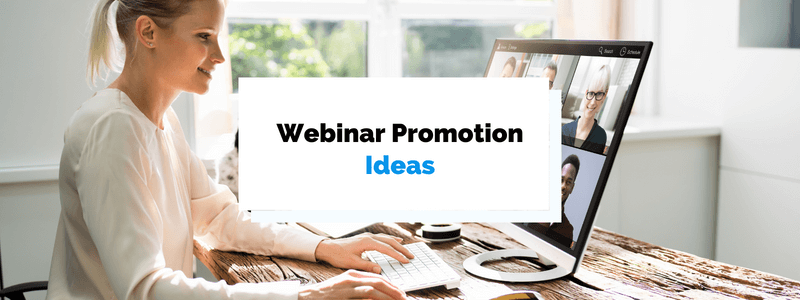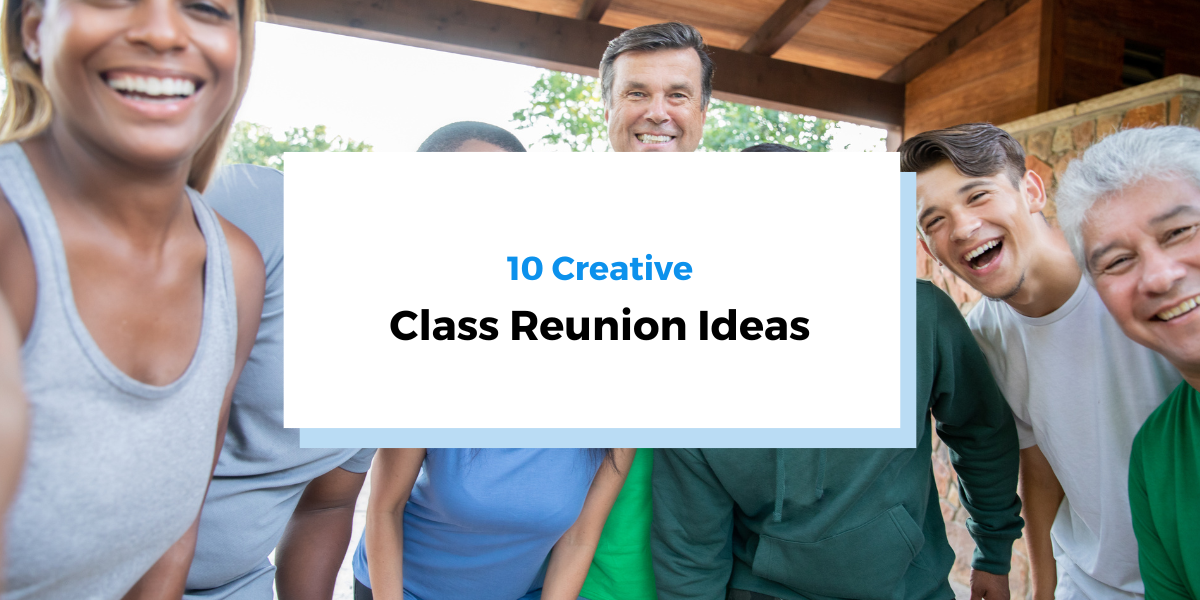Webinars help you generate leads, develop relationships with customers, and establish your reputation as a credible expert in your space.
Of course, for webinars to have such a positive effect, you need to inform the right people about them and convince them to attend.
Today we’ll cover seven of the best ways to promote a webinar, from paid methods like running targeted online ad campaigns to organic ones like publishing blog social media posts about your upcoming webinar.
- Know When to Promote Your Webinar
- Create a Landing Page for Your Webinar
- Use Pop-Ups to Promote Your Webinar
- Launch an Automatic Email Campaign
- Write a Blog Post About Your Webinar
- Post About Your Webinar on Social Media
- Purchase Online Ads for Your Webinar
- Conclusion
Know When to Promote Your Webinar
It’s best practice to promote your webinar early and often.
This ensures that you reach a larger audience, hit the same people more than once, and allow attendees to plan for the event in advance so that they can avoid scheduling conflicts.
According to a study of 350,000 webinars, the majority of attendees sign up for webinars within one week of the event, but 31% of attendees register within the 2-4 week range:
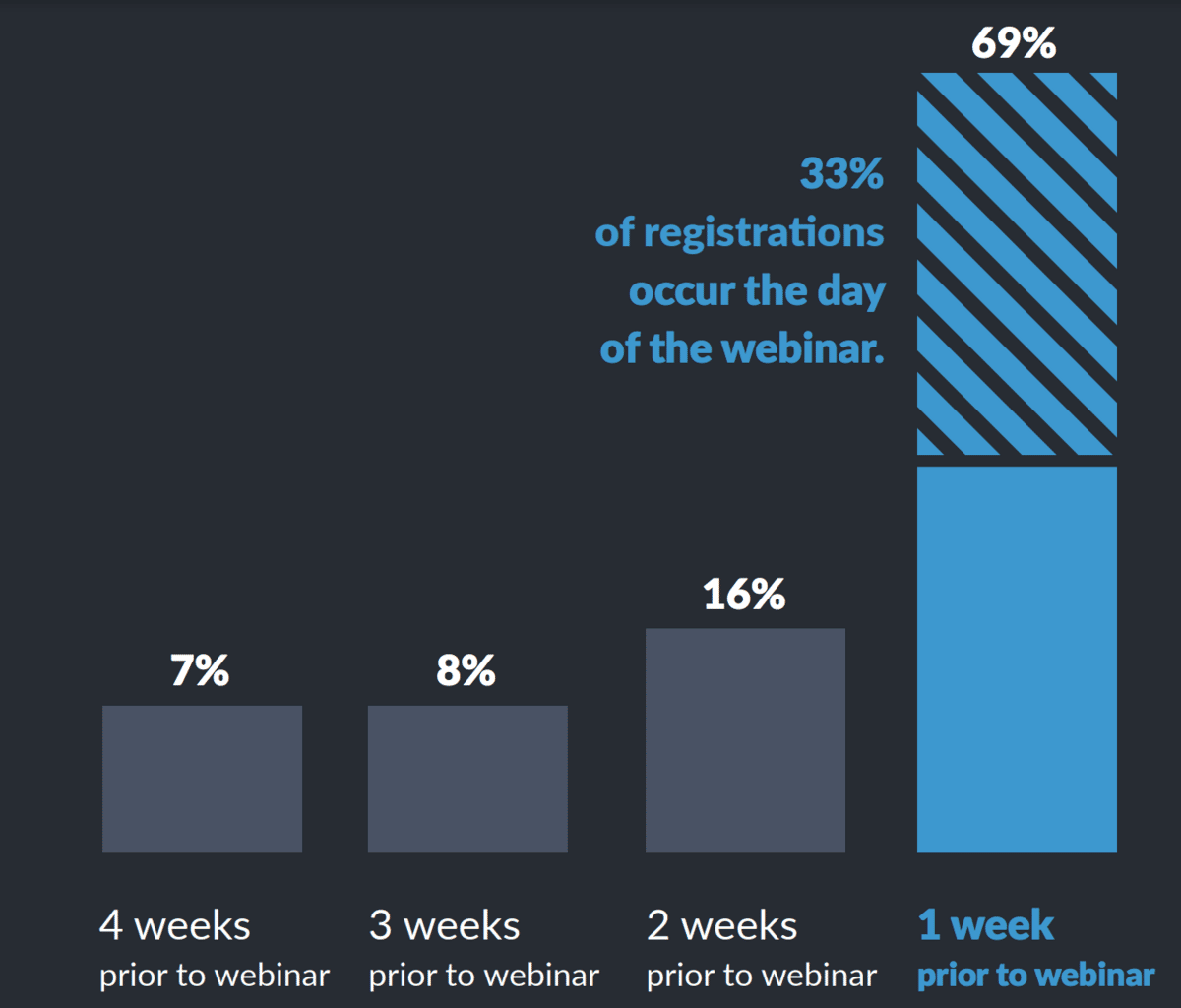
Source: GoTo Webinar
So while the bulk of your promotion spending and activity should occur within the final week before the webinar, it’s still smart to promote your webinar up to a month before the show to capture those early birds.
Another insight gleaned from the study is that, out of all the days, Tuesday receives the greatest number of registrees, making it the best day to run your promotions.
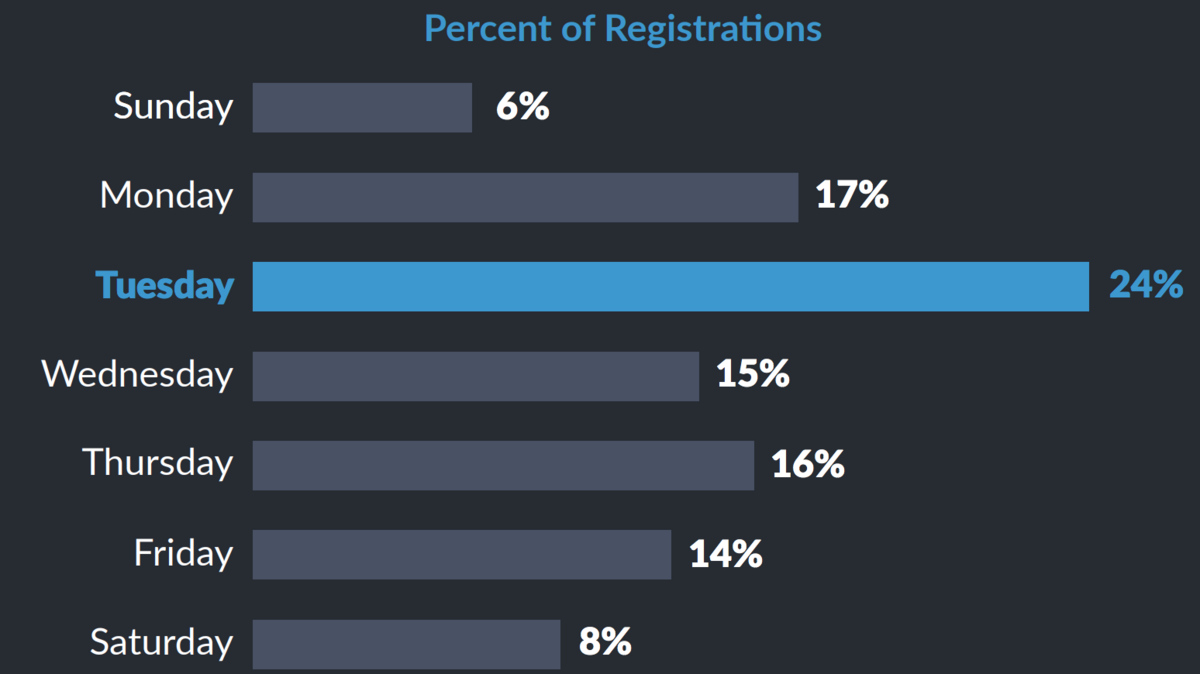
Source: GoTo Webinar
Weekends tend to receive the smallest percentage of registrations, so focus your promotional efforts on weekdays to maximize their impact.
Of course, your business will generate unique registration data, which will inform you about the optimal timing more than any general study.
Collect that data and analyze it after each webinar to assess which days and timeframes secure the highest number of registrants, and adjust your strategy accordingly the next time around.
Create a Landing Page for Your Webinar
Your landing page is the final destination for those in your marketing funnel.
After clicking on your advertisement or social media post, leads will end up on your landing page, where they can fill out an online registration form to register for your webinar:
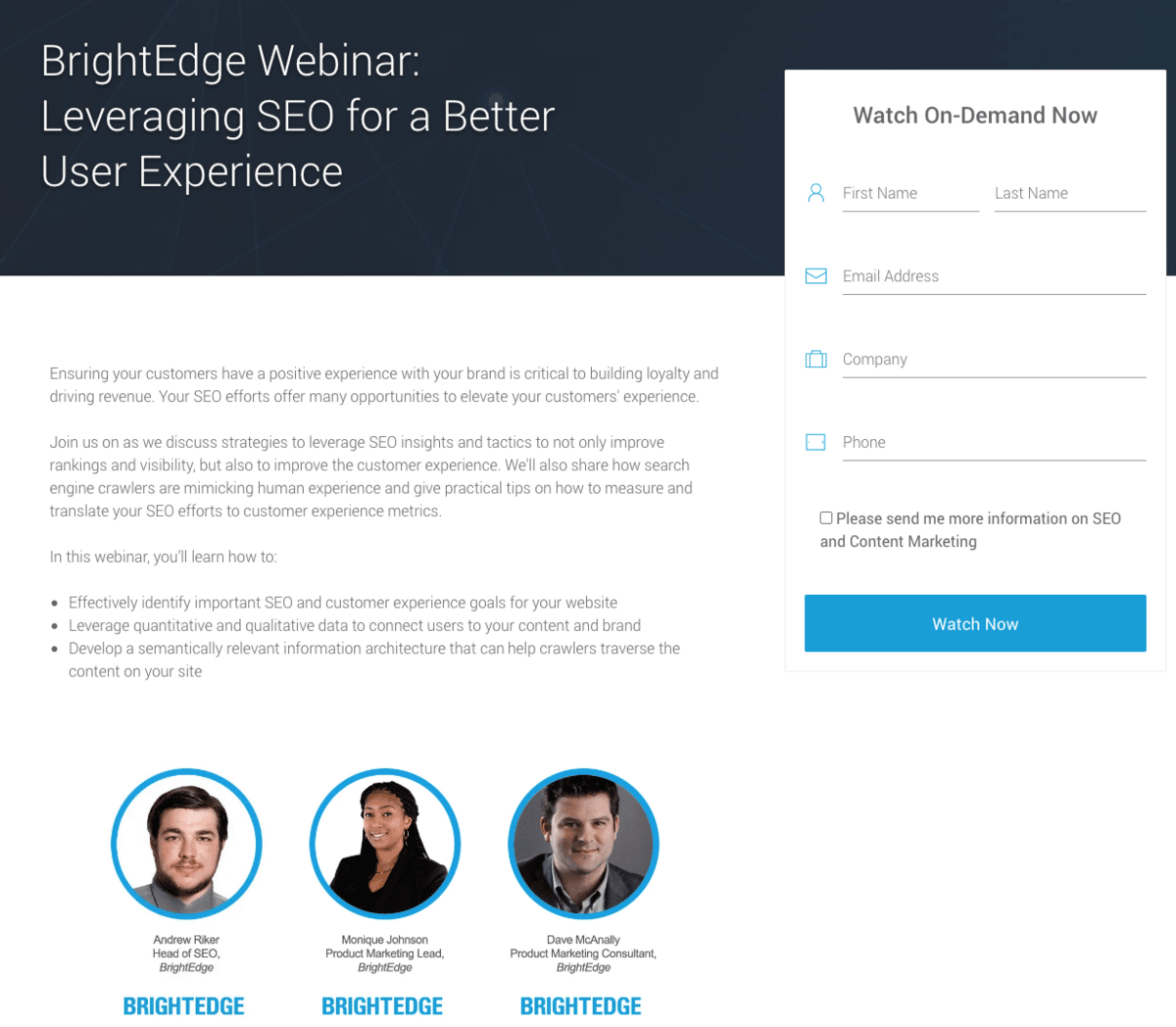
Source: Brightedge
In addition to hosting an online form, your landing page should also contain detailed information about the webinar.
Tell leads what topic you’ll discuss or teach and why this topic is valuable for them to know.
Aside from being informative, your webinar description acts as a final piece of sales messaging that will push hesitant leads over the finish line.
Further, to create an incredible landing page, share the following information:
| The speaker’s name and title |
| The credentials the speaker holds |
| The date, time, and duration of the webinar |
These points will answer the final questions your leads may have, and establish your webinar’s credibility.
To end the page, include a call-to-action (CTA) asking the lead to register for the webinar.
Words like “Claim Your Seat and Register Now” are common and effective because of their clarity.
Make sure the CTA stands out from the rest of the writing on the form.
Many businesses use a CTA button to guide the reader’s attention to the CTA, as Airbnb has done in their landing page below:
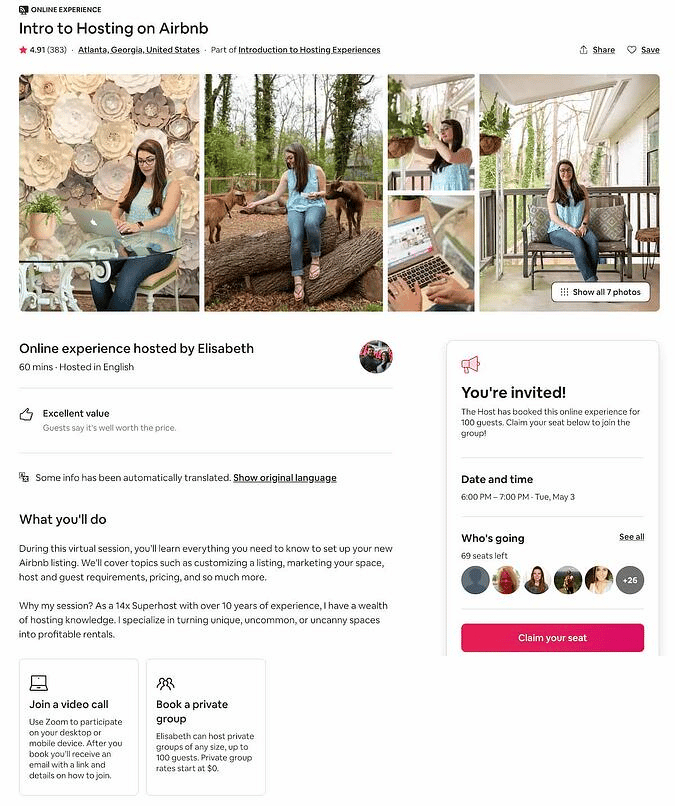
Source: Airbnb
To improve your conversion rates, consider including video previews of the webinar.
People who don’t want to read your copywriting, regardless of how concise and compelling it is, will appreciate this option.
Use Pop-Ups to Promote Your Webinar
Various types of pop-ups can be used to promote a webinar on your website, including entry pop-ups, exit pop-ups, scroll-triggered pop-ups, time-based pop-ups, and interaction-based pop-ups.
Pop-ups work because they direct your website visitors’ attention to your promotional content and convince them with a short value proposition to click on your CTA button.
This is exemplified below:
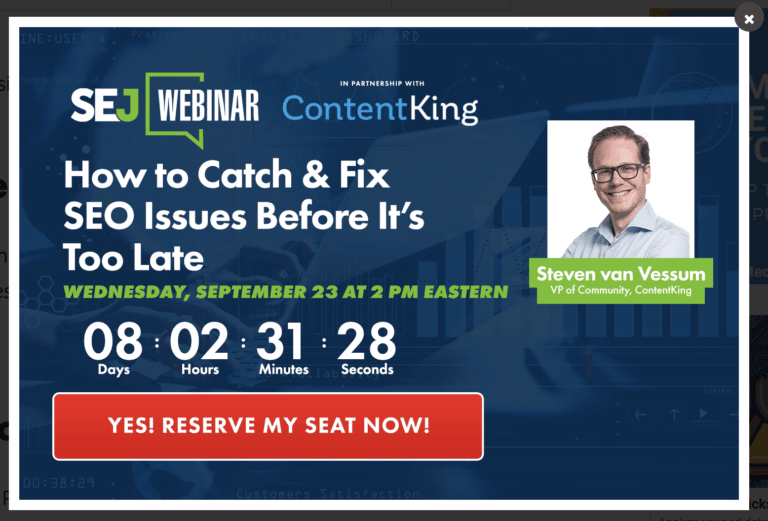
Source: Search Engine Journal
Numerous website visitors who are interested in fixing SEO issues will click on the CTA button to reserve their seat, especially if they already trust the brand and enjoy its content.
There are some best practices to follow when using pop-ups to increase your conversion rates, like using images.
According to research, pop-ups with images convert better than imageless pop-ups by 83.57 percent:
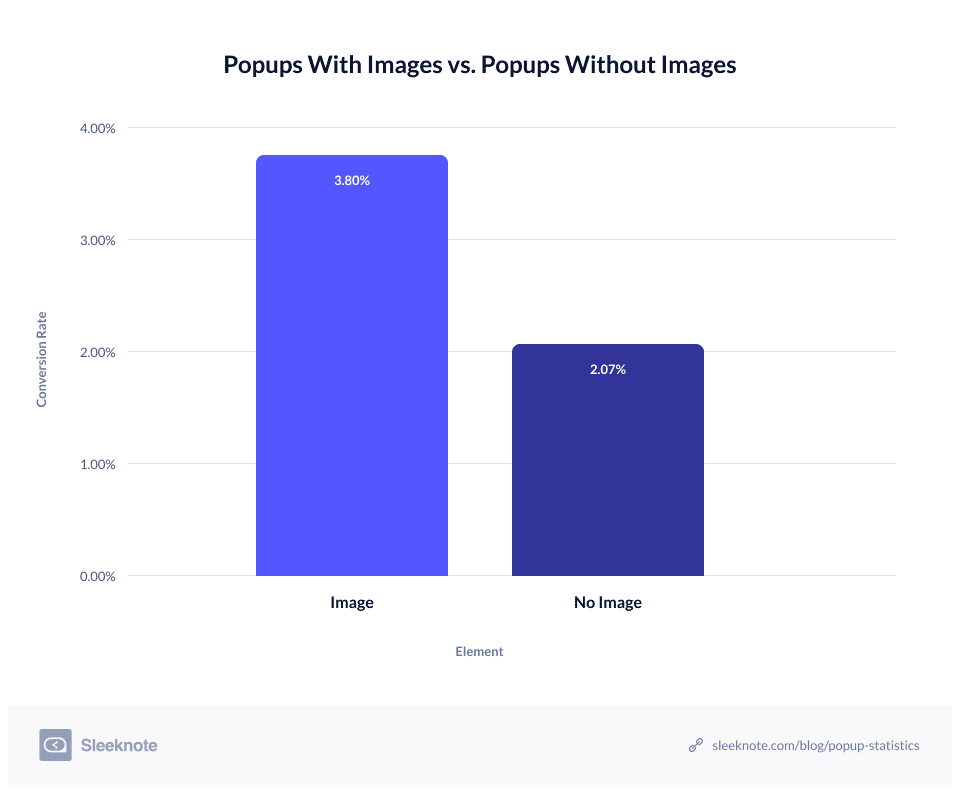
Source: Drip
Consider including images of your speakers or even just a graphic symbolizing the topic.
Another best practice when creating pop-ups for your webinar is to use a countdown timer to create a sense of urgency.
Pop-ups with a timer convert more than twice as frequently as pop-ups without one:
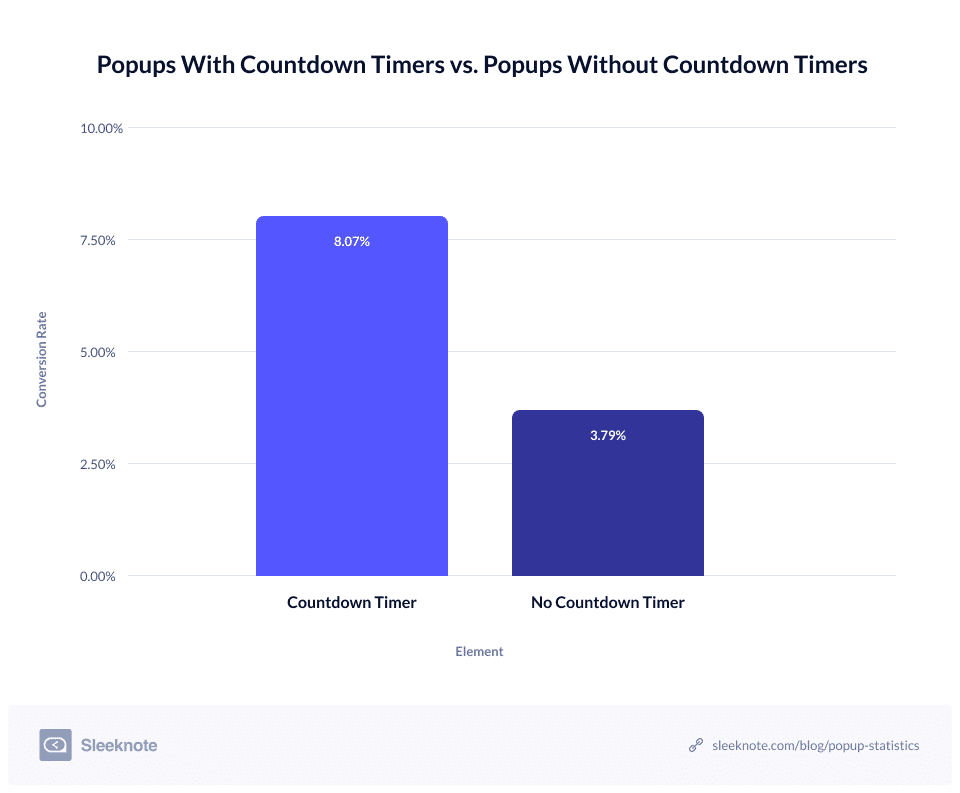
Source: Drip
Lastly, according to the research, if you’re going to include input fields in your pop-up instead of a button that takes them to a landing page, it’s best to include 1-2 fields in your pop-up.
Any more, and the users will become overwhelmed by the effort it takes to commit and exit.
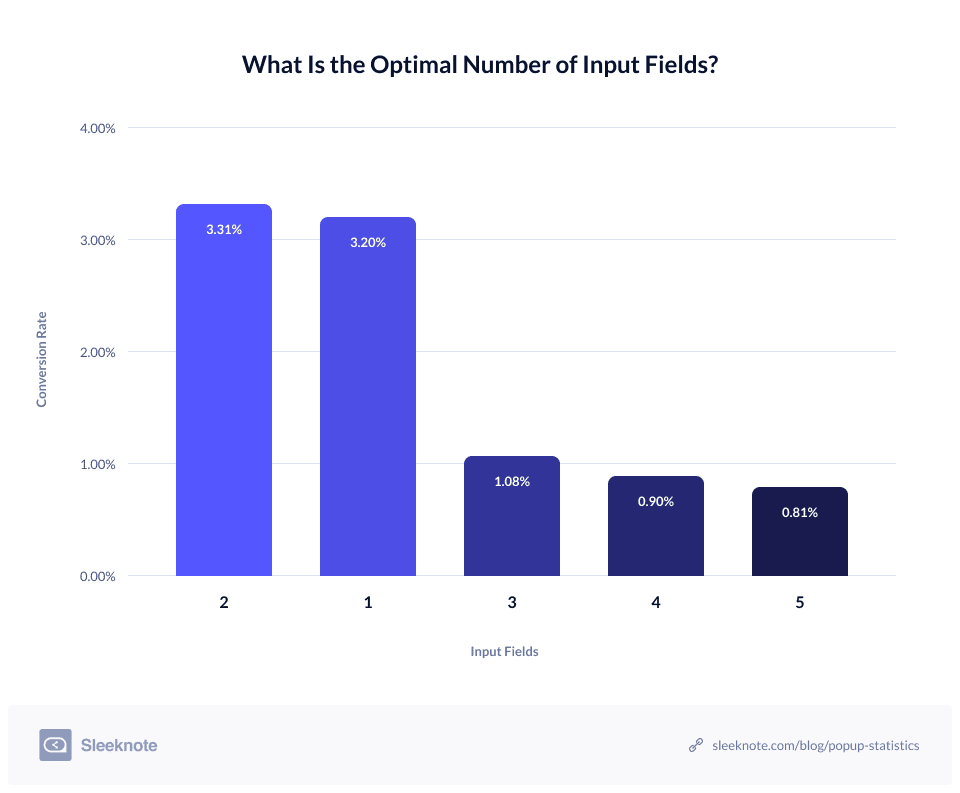
Source: Drip
The most critical information to collect is usually the user’s email address and first name.
These help you communicate with them leading up to the webinar and also allow you to market to them in the future.
In sum, pop-ups are a cost-effective way to turn website visitors into attendees for your upcoming webinar.
Launch an Automatic Email Campaign
Take advantage of your email list and launch an automatic email campaign of personalized emails that promotes your webinar and teaches recipients about its value.
Start by segmenting your audience into two categories based on whether or not they’ve signed up so that they receive emails relevant to their situation.
That’s easy to do with an online registration platform like Regpack, which comes with email communication features and database filtering.
As for what you send each group, the people who have already signed up should receive emails reminding them about the upcoming webinar and telling them how to prepare.
Meanwhile, the people who haven’t registered should receive emails that hype up the webinar and encourage them to sign up.
With Regpack, you can easily create automated email templates with fields that auto populate with the data you have in the software, like the recipient’s name or job title.
This personalization will happen automatically and increase your conversion rate.
To personalize the experience even further, Regpack allows you to set up triggers so that emails are sent when a specific action is taken:
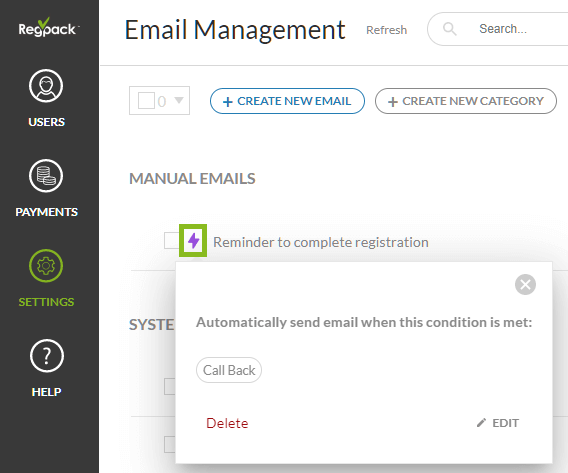
Source: Regpack
For example, if someone in the non-registered group goes on to sign up after receiving a promotional email, you could configure the system to automatically send them a confirmation email with more information about the webinar.
When done right, email campaigns are a cost-effective and personalized way to get more people to register for and attend your show.
Write a Blog Post About Your Webinar
It’s a good idea to publish an article that educates readers about the topic you’re going to cover in your webinar and gives them information about the webinar itself.
For example, if a company was promoting a webinar helping parents learn about the most beneficial after-school programs for their kids, the company could write a blog post titled “The 5 Best After-School Programs for Your Kids: Upcoming Webinar”.
If the blog post answers a specific query that people are asking online, it has a chance to rank well on the Google results pages and will attract people who are interested in the topic of your webinar.
You can also promote the post to your audience by publishing it on social media platforms or sending it to you in emails.
Plus, regular readers of your blog might stumble upon the article and webinar while checking up on your site.
Somewhere within the blog post, tell readers that you’re hosting a webinar that delves deeper into the topic. Tell them the date and time, speaker, and focus of the webinar.
Also, include a CTA link or button that will take them to the webinar registration page. People can then easily register for your webinar.
Be sure to tell them specifically why they’ll benefit from attending the webinar. Being clear about how the webinar will positively impact their lives motivates them to sign up.
In sum, writing blog posts about your webinar and the topics you’ll teach drives traffic to your webinar landing page and increases registration numbers.
Post About Your Webinar on Social Media
Regardless of your industry, it’s likely that your target audience is active on social media, so it’s a good idea to post about your webinar on platforms like LinkedIn, Twitter, Facebook, and Instagram.
TikTok is also becoming more popular, especially among younger generations, so schools and other companies with younger audiences should preview their webinar on this growing social network as well.
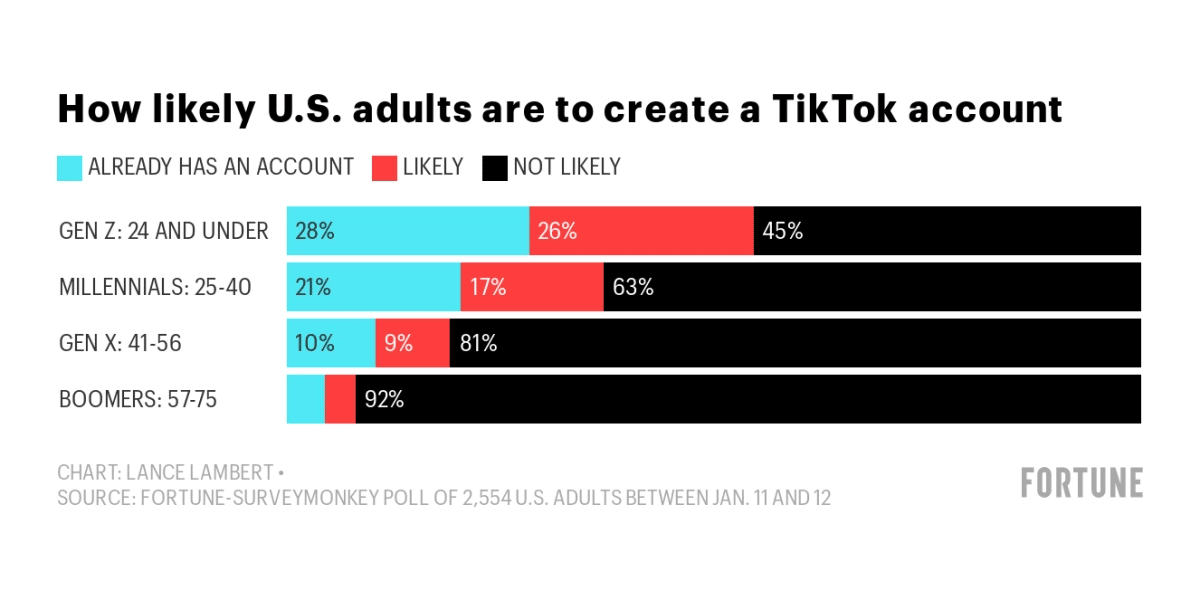
Source: Fortune
Your social media posts should be tailored to each social media platform to take advantage of each platform’s most unique features and match its users’ expectations.
For example, when posting on Twitter, it’s important to write short punchy promotional messages and to include hashtags related to your webinar’s topic to increase visibility and conversion rates.
Heart of England does a great job of this below and also includes an image to make the promotion stand out more in the feed:
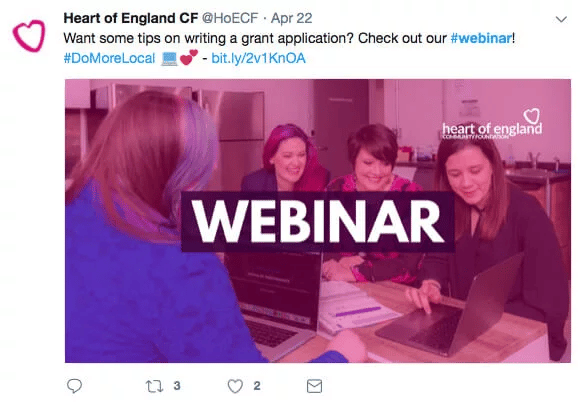
Source: My Own Conference
On Tik Tok or Instagram, it’s a good idea to create a short video previewing the content in the webinar.
One strategy to increase conversions is to name a problem and then drop 1 or 2 helpful pieces of advice.
Then, to end the video, tell users that they’ll learn the rest if they sign up for your webinar. This tactic works across most platforms and is often called the hook, line, sinker.
It creates a desire, satisfies it slightly, and promises to satisfy the rest if the user takes some action — in this case, registering for the webinar.
To further prove the value of your webinar to social media users, consider including links to your speakers’ social media platforms.
That way, people can check them out and see how credible they are.
You could also ask your speakers to promote the webinar to their audiences on social media so you can reach more potential attendees.
As a final tip, consider making some of your social media promotional posts interactive, by perhaps including a poll or question.
This technique increases engagement in the form of likes, comments, and shares.
And social media algorithms take engagement as an indication that people are enjoying your post, so the platform will show your webinar promotion post to a greater number of people, helping you attract more attendees.
Purchase Online Ads for Your Webinar
If you have the budget, consider buying targeted online ads to promote your webinar to people that fit your ideal customer profile.
Two of the most popular and effective forms of online advertising are Google Ads and social media ads.
Google Ads is a pay-per-click advertising option, which means you’ll pay a fee whenever a user clicks on the advertisement, and the ads appear on the top of Google’s search results pages for queries related to your offer.
For example, if you were promoting a webinar titled “Choosing a Summer Camp for Your Children”, you might run ads on queries like “How to pick the right summer camp for my 8-year-old?” and others with a similar sentiment.
Some of the major reasons for using Google Ads are their targeting capabilities, massive reach, and wide range of workable budgets.
On the other hand, social media ads are advertisements that run across social media platforms like Facebook, LinkedIn, or Twitter.
For example, here’s an ad from Facebook:
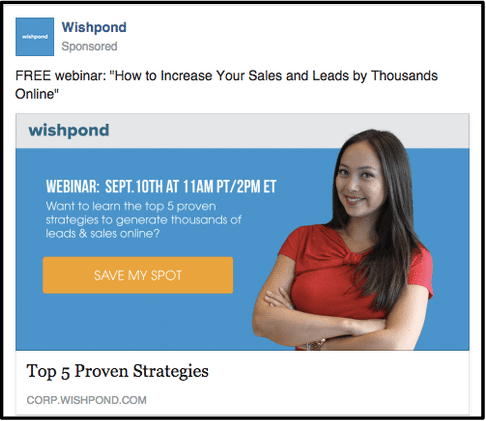
Source: Wishpond
Like Google Ads, social ads have excellent targeting capabilities for reaching high-quality leads, and they have the added benefit of building up your brand recognition because they tend to include images and more on-brand, playful copywriting.
If you can swing it, a combination of both Google and social ads is usually the best strategy. This enables you to reach the largest set of potential attendees.
Conclusion
The best promotion strategy for a webinar is a diverse one. Companies can improve their attendance numbers by using a combination of techniques.
For example, a small business might choose to create a landing page, run social media ads, and write a blog post. Each technique supports the others.
If you need help tracking your registrations, building online registration forms, and marketing your webinar through email, check out Regpack, an online registration platform for service-based businesses.


